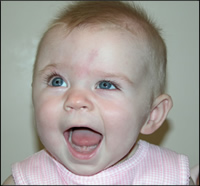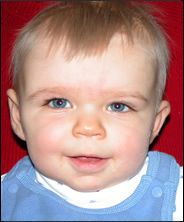Hospital Course for Craniosynostosis

Before
Craniosynostosis is treated with a combination of surgical intervention and helmet therapy. If treated early enough in a baby's life, minimally invasive endoscopic surgery may be performed. Surgery will require a hospital stay of three to four days. We can help you and your child prepare for the hospital stay during a tour of the hospital and operating room. A child life specialist will meet with you and your child to provide this tour and to answer any questions you may have.
What to Expect
-
Day of Surgery. On the morning of surgery you will report to the Day Surgery Area. After your child is taken to the operating room, you and your family may wait in the Family Waiting Room. From time to time, someone from the surgical team will provide progress reports. Books, coffee, and Internet access are available for family members.
-
Following Surgery. After surgery, your child will spend one or two nights in the pediatric intensive care unit (PICU) in order to be closely watched. During this time, your child will be connected to several IVs and monitors, and may have a CAT scan performed. You may visit your child as much as possible, and will be able to spend the night in your child's room.
-
Day After Surgery. One or two days after surgery your child will be moved to the general pediatrics unit to continue recovery until it is time to go home.
Pediatric Intensive Care Unit (PICU)

After
After your child's operation, he/she will be admitted to the pediatric intensive care unit (PICU) for 1or 2 days. This allows your child to recover and receive close monitoring for the first hours after surgery. Your child will generally have a central line (this is a large IV that allows the nurses to administer medication and fluids) and an arterial line in his or her wrist. An arterial line allows the nurses to readily draw blood from your child without having to reinsert the line each time. In addition, your child will also be connected to a monitor that measures his or her heart rate, blood pressure, and oxygen saturation. After your child is stable and no longer needs the monitors, IVs are removed and your child will be moved to the general pediatric floor.
General Pediatric Unit
Your child will spend a few days on the children's unit before going home. The monitoring is less intense and your child will be able to go for walks and participate in child life activities.
Many children who receive the minimally invasive endoscopic surgery will also require craniomolding helmet therapy following surgery. Your child's doctor will provide information on this therapy.
After your child is discharged from the hospital, he or she will need to have a follow-up appointment with the plastic craniofacial surgeon 1 or 2 weeks later.
More Information
At Golisano Children's Hospital we are fortunate enough to have certified child life specialists who can help you and your family prepare for your child's surgery, offer developmentally appropriate activities, and provide additional support. To find out more, please contact the Center by calling (585) 273-FACE.